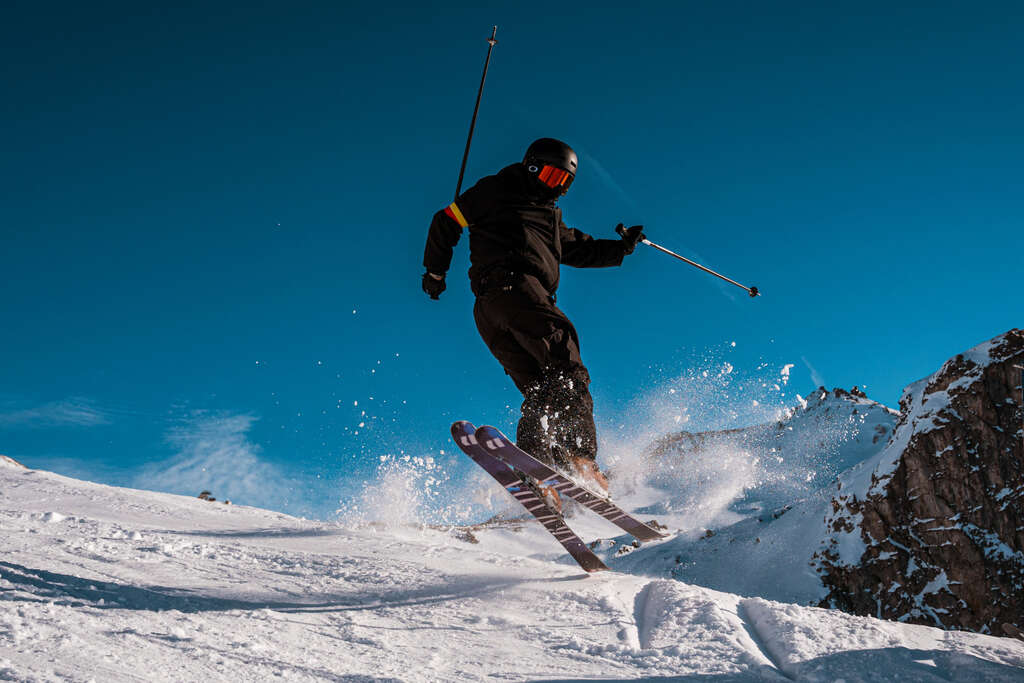The True and False of skiing with toddlers
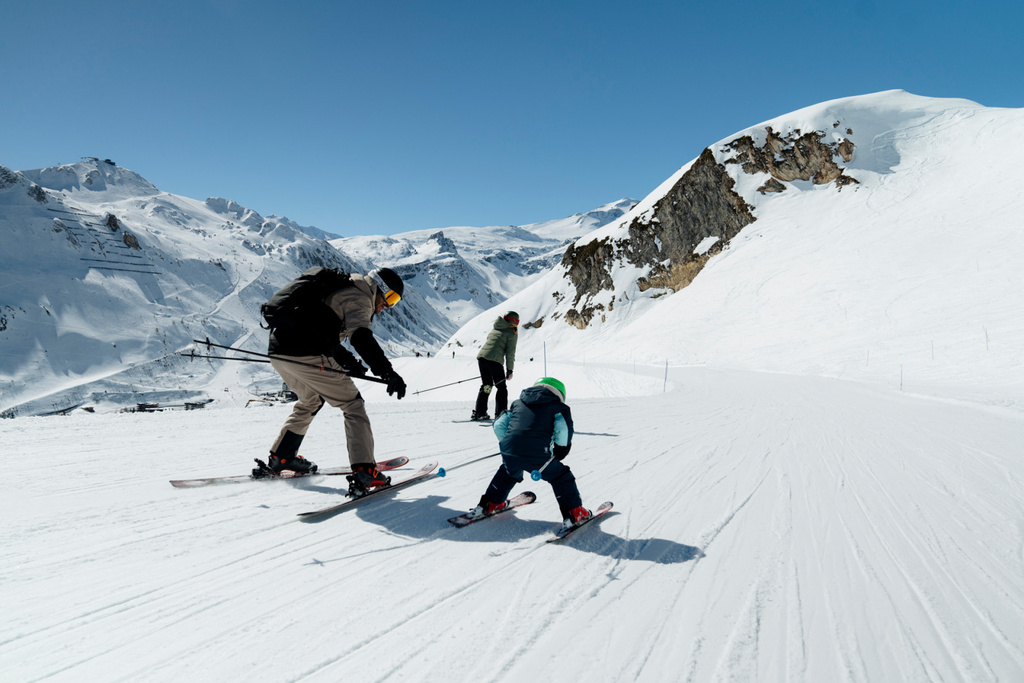
Can you go on a skiing holiday with young children? Yes, it’s certainly possible! This section on the “Rights-and-Wrongs” of skiing with young children, with comments from Nathalie Bertholin, Corinne Mermoz, Pierre Espargiliere and Neile Combralier, all ski instructors in Tignes, illustrates this fact.
A child can start skiing as early as age 3…
TRUE! Some schools welcome children as young as 2 in private lessons, and 2? or 3 in group lessons. It all depends on the child, his or her desire and dynamism, and more specifically on his or her feet, which need to be big enough for children’s ski boots. Ski boots for hire are available from size 22/23 upwards.
Snowboarding is not for everyone yet
FALSE! You can put a child on a snowboard from the age of 2 and a half. It’s also a good way to teach them to stand up. Here’s something to reassure team-snowboard fans!
On the other hand, it’s a small approach that complements skiing. For many, it’s preferable to wait until 6/8 years of age, so as not to take up asymmetrical sports too early, but there’s nothing to stop you trying them out if your child is very keen.
Ski lessons for toddlers are childcare…
FALSE! Ski lessons set real goals for your little ones!
Your child will discover the thrill of sliding and learn to snowplough through fun games. More than that, your child will also improve his or her concentration and develop motor skills and balance. It’s all about learning, but children learn fast! Some try their first turns by the end of the week!
Taking a lift is too complicated
FALSE: There are special lifts for very young children, such as the “tapis roulant” or “fil neige”, and for the classic lifts, all you need to do is accompany your child. Depending on your child’s level, you can put an arm in front of him for support, lift him a little to help him sit on the chairlift, move him back on the seat and help him get off the chairlift.
What’s more, chairlifts are now equipped with U-block systems on the railings to adapt to children’s height. But be careful! These devices are only present on one side of the chairlift: always on the side of the ski patroller and his hut.
Holding my child between the legs is a good way to teach him to ski…
FALSE! FALSE! FALSE AND VERY FALSE!
If there’s one question on which all ski professionals agree, it’s this one! Holding your child between the legs is detrimental to learning!
- He’ll lean back in your arms and develop bad posture habits that are very difficult to correct afterwards.
- He can’t hold his body up on his own, so he has no feeling of glide, and can’t use his own muscles to stand up. This makes learning to stand all the more time-consuming.
It’s not a good solution for you either. This practice is :
- Bad for your back (Yes, the Mag’ editorial team cares about your lower back…)
- Dangerous: firstly, in the event of a fall, you risk landing on your child, and secondly, you can’t look at the skiers around you while you’re holding him. This means risking a collision (Cf. primo…).
The right alternative? Once your child has got to grips with the flat and is able to stand up on a short descent with a natural stop, take him next to you and hand him a pole. In this position, he’ll be able to balance himself, feel his support and be the sole master of his skis!
Bonus tip: adapt the difficulty of the track to your child’s level. Stick to easy, suitable terrain where he can learn to brake and manage on his own without getting scared. A must? A track with a natural stop to avoid scares.
Introducing my child to skiing with skates – a good idea!
FALSE!
Finally, there’s no denying the practical side… But après-ski boots don’t hold your child’s feet as well as ski boots. Skates are for fun before the age of 2 or 3. But when it comes to learning to ski… well, you need skis and boots that fit!
For parents worried about the comfort of their kittens’ feet, don’t panic! Children’s ski boots are much better designed than they used to be. When choosing them, pay attention to what your child has to say: as with grown-ups, when you try on a ski boot, it’s normal to feel a little uncomfortable at first! But within a few days, the boot will fit.
And the rest of the equipment?
- Skis: Size matters! The tip must reach your child’s chin.
- Sticks: No need for sticks until they know how to turn!
When skiing, I dress my child as I dress myself…
TRUE!
As with adults, we dress our children for the weather. As children move around a lot, you should try to equip them with breathable clothing for perspiration and fleece for the cold. Dungarees are practical, as they prevent snow from creeping in.
- Here’s an extra tip: avoid wearing a suit… which is really impractical when you’ve got to go to the toilet!
On the other hand, there are a few must-haves:
- The right gloves! More like mittens to protect their little fingers from the cold. But BE CAREFUL with the size. Especially when they’re in ski class, because with mittens that are too big they won’t be able to catch anything and won’t get the most out of their day.
- The neckband: Protect this sensitive area from the wind and cold!
- Goggles or mask: Protecting their eyes is essential. In the snow, just like at sea, their eyes are very exposed. So we take care of them with 4-index lenses. A mask is more practical with a helmet. Goggle temples under helmets can be painful for children.
Extra tips…
1. Avoid saying “Put on your parallel skis”.
As children are best served by talking in pictures, here are a few examples:
- Instead of “parallel skis” prefer: “straight as fries/like Twix”.
- To get them to understand the snowplough, try “Make the slice of pizza, the mountain, the Christmas tree, the snow groomer or the pointy hat (turlututu…)”.
- “Do as I do” is also a good example, since children often act by mimicry.
2. “We trust our children!
Once your child is on skis and in good hands, you go out and enjoy the snow so that he or she can learn to trust the group and the instructor. By staying close by, even if you don’t mean to, you’re putting pressure on your child.
Our advice? We leave them to it, we trust them and we often ask them: “Did you have a good time?”. I promise, he’ll have a banana by the end of the week!
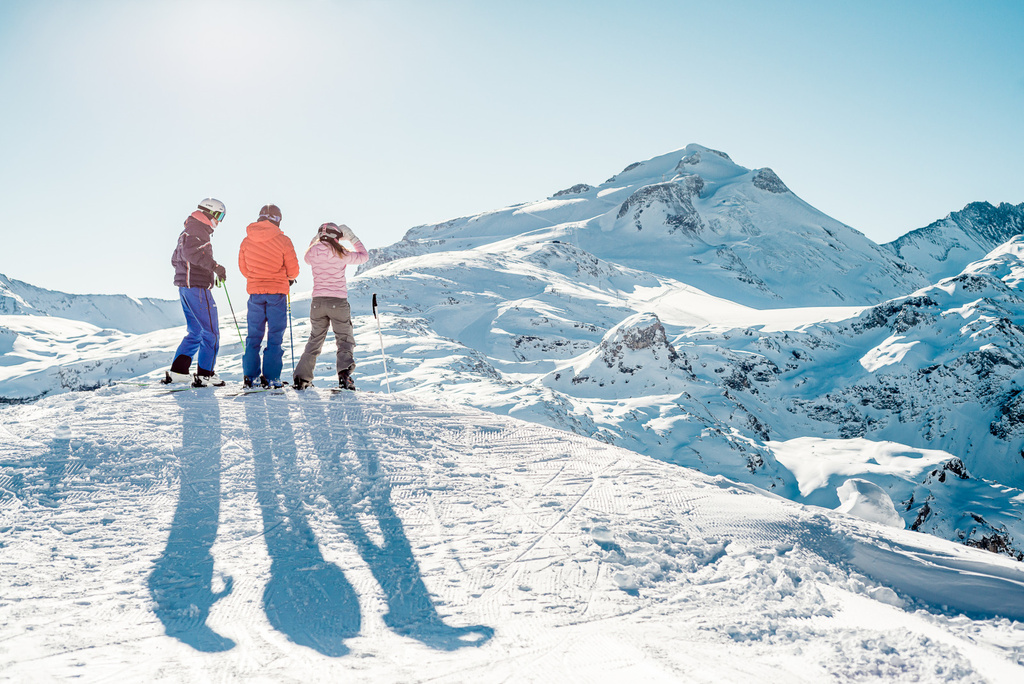
Why choose Tignes as your first ski resort?
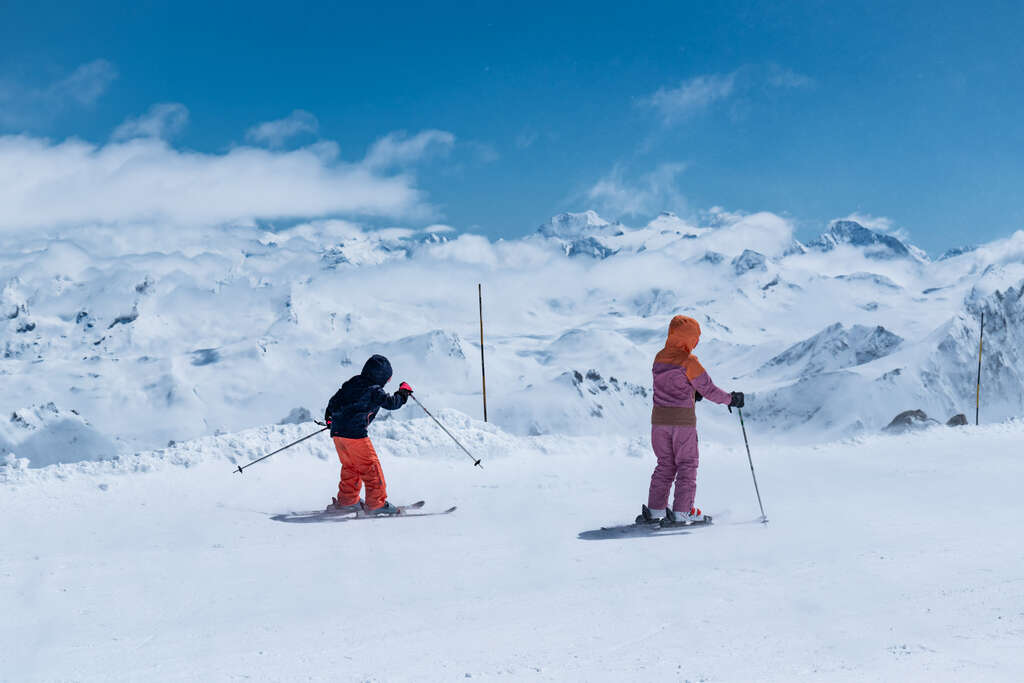
Learn to ski in spring: the right plan!
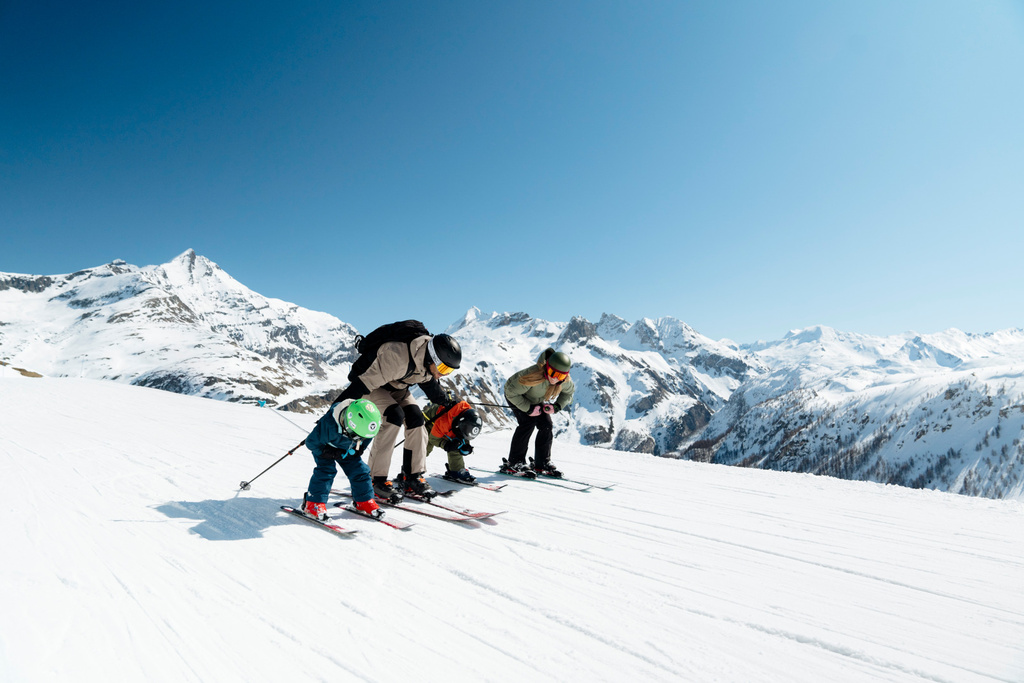
This winter, everyone goes for it
